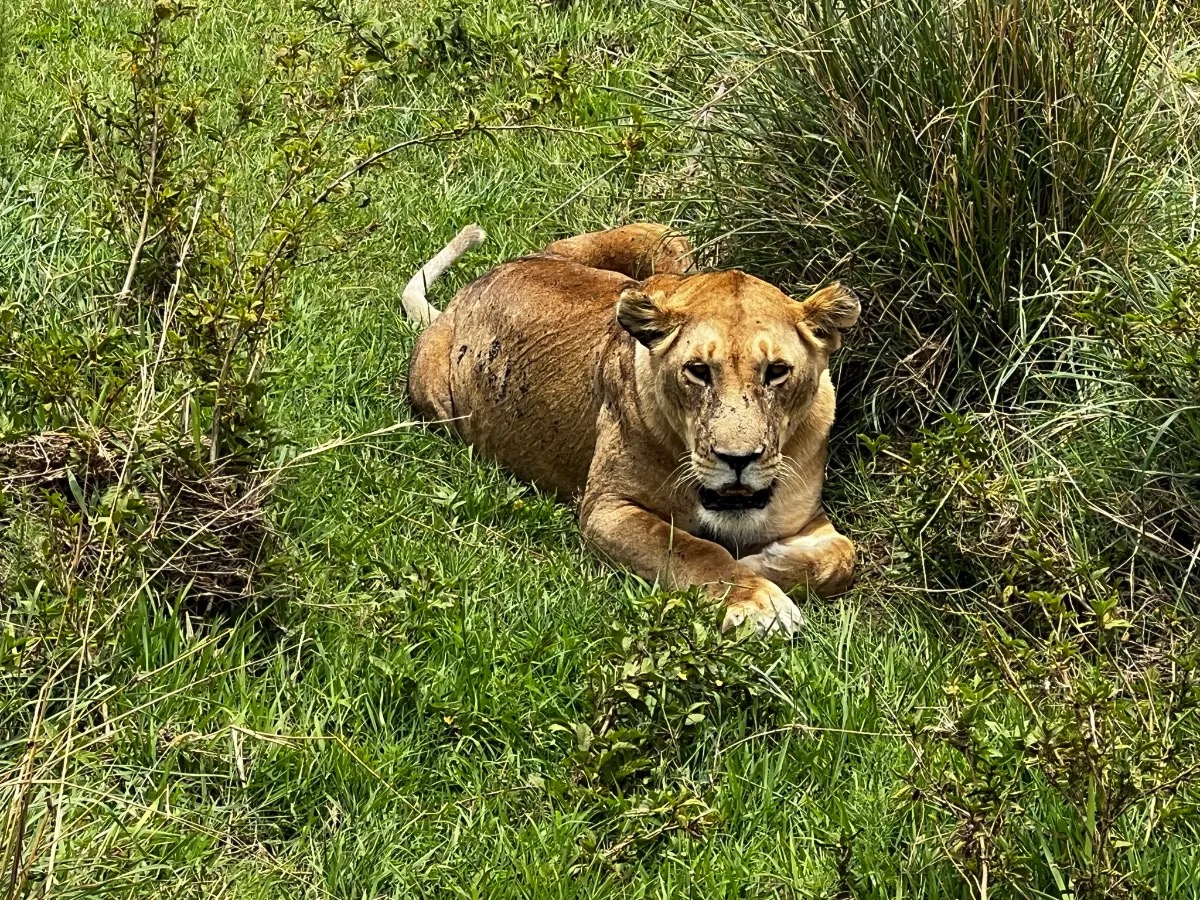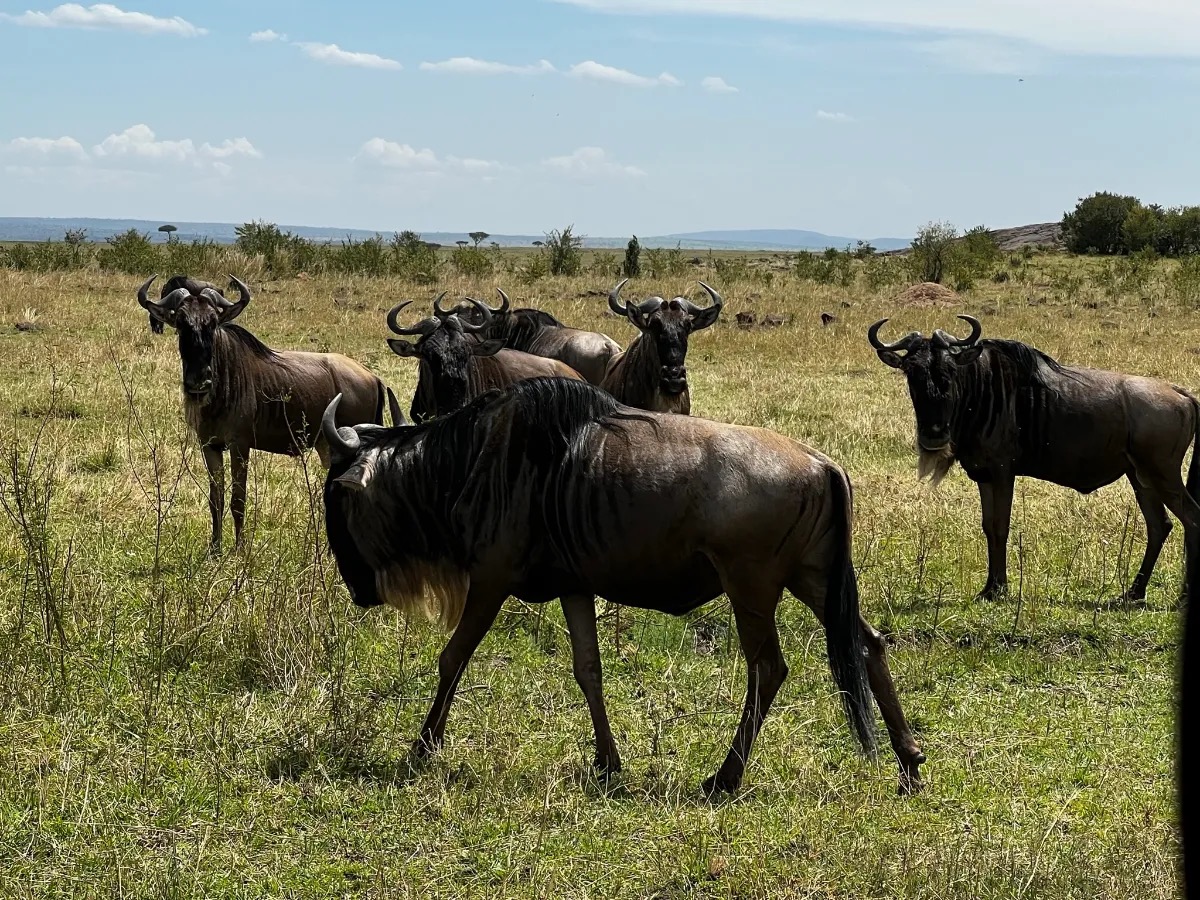
NITA BHALLA, of the Thomson Reuters Foundation, reports that one of the world’s great wildlife spectacles may be at risk of collapsing within decades as more frequent droughts and floods disrupt the Maasai Mara’s fragile ecosystem…
Maasai Mara National Reserve, Kenya
Thomson Reuters Foundation
Maasai elder Ngararika Noompunito beams as he recalls the awe he felt as a boy when herds of bellowing wildebeest passed close to his mud-and-thatch homestead near Kenya’s Maasai Mara National Reserve.
“There used to be many wildebeest coming through here,” the 65-year-old said as he sat next to his wooden-fenced kraal, wearing a wide-brimmed bush hat and a vivid pink shuka, or Maasai shawl.
“Now, they are much less in number and we don’t see them this side anymore. If there are more years when there is little or no rain, maybe the wildebeest will stop coming to Kenya altogether.”

A herd of wildebeest at the Maasai Mara National Reserve, in Kenya on 28th September. PICTURE: Thomson Reuters Foundation/Nita Bhalla
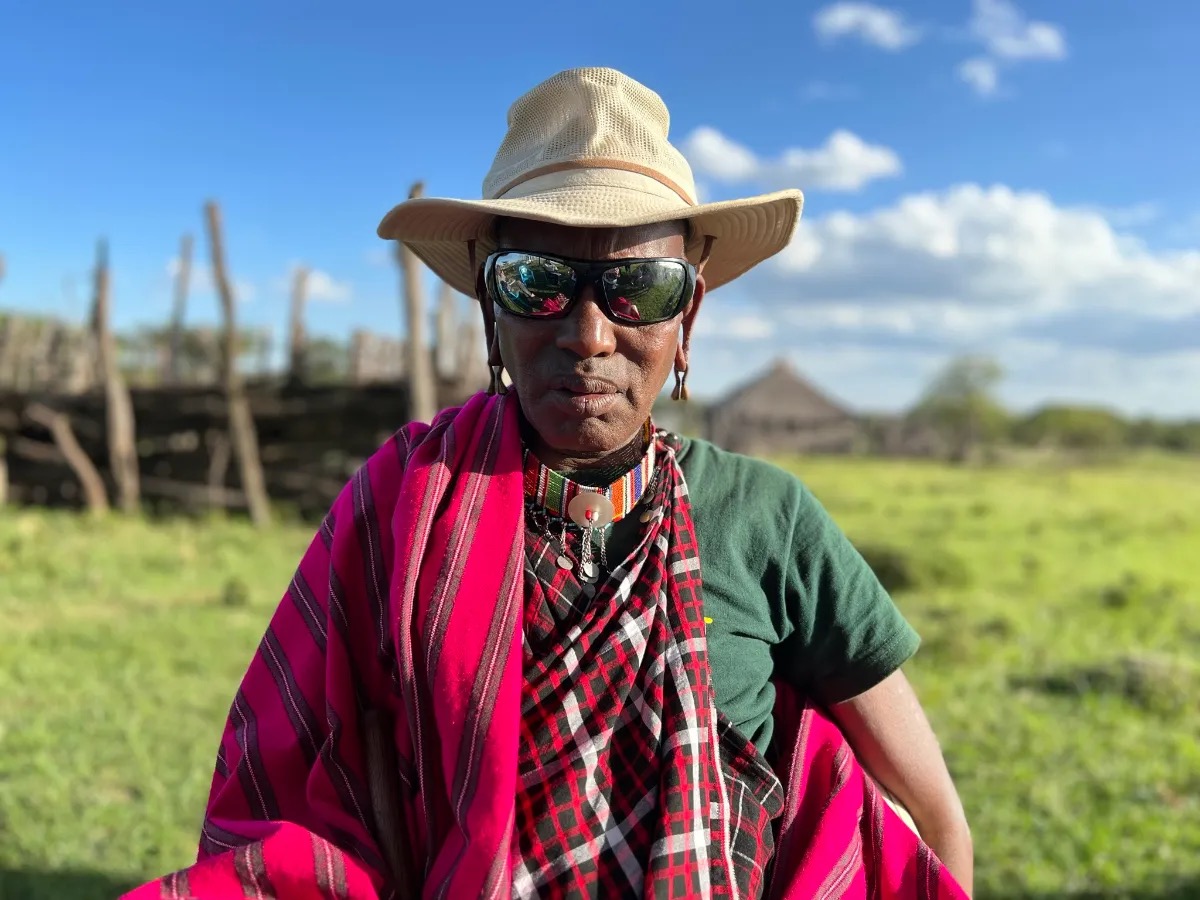
Maasai elder Ngararika Noompunito poses for a picture in the Oloisukut Conservancy, bordering the Maasai Mara National Reserve, in Kenya on 27th September. PICTURE: Thomson Reuters Foundation/Nita Bhalla
“There used to be many wildebeest coming through here. Now, they are much less in number and we don’t see them this side anymore. If there are more years when there is little or no rain, maybe the wildebeest will stop coming to Kenya altogether.”
– Maasai elder Ngararika Noompunito
It is one of the greatest spectacles of animal migration on Earth: hundreds of thousands of wildebeest, zebra and gazelle making their annual trek from Tanzania’s Serengeti National Park across the border into the Maasai Mara in Kenya.
But as the planet warms, this natural wonder – which draws droves of binocular-wielding safari-goers in open-top jeeps every year – is under threat, wildlife conservationists say.
Erratic weather linked to climate change has brought more frequent and severe droughts, and sporadic flooding, to the Mara’s fragile ecosystem, leaving the wildebeest increasingly devoid of grazing pasture.
This is not only leading to fewer animals migrating to Kenya, but also resulting in them staying for less time.
Research conducted by Joseph Ogutu, a senior statistician at Germany’s University of Hohenheim and an expert in wildlife population dynamics, found there used to be four different wildebeest migrations occurring in different parts of Kenya, but that three have collapsed.
The Serengeti-Mara migration is the only one that remains – but even there wildebeest numbers fell to 203,611 in 2021, a decline of nearly 60 per cent from 1977, said Ogutu.
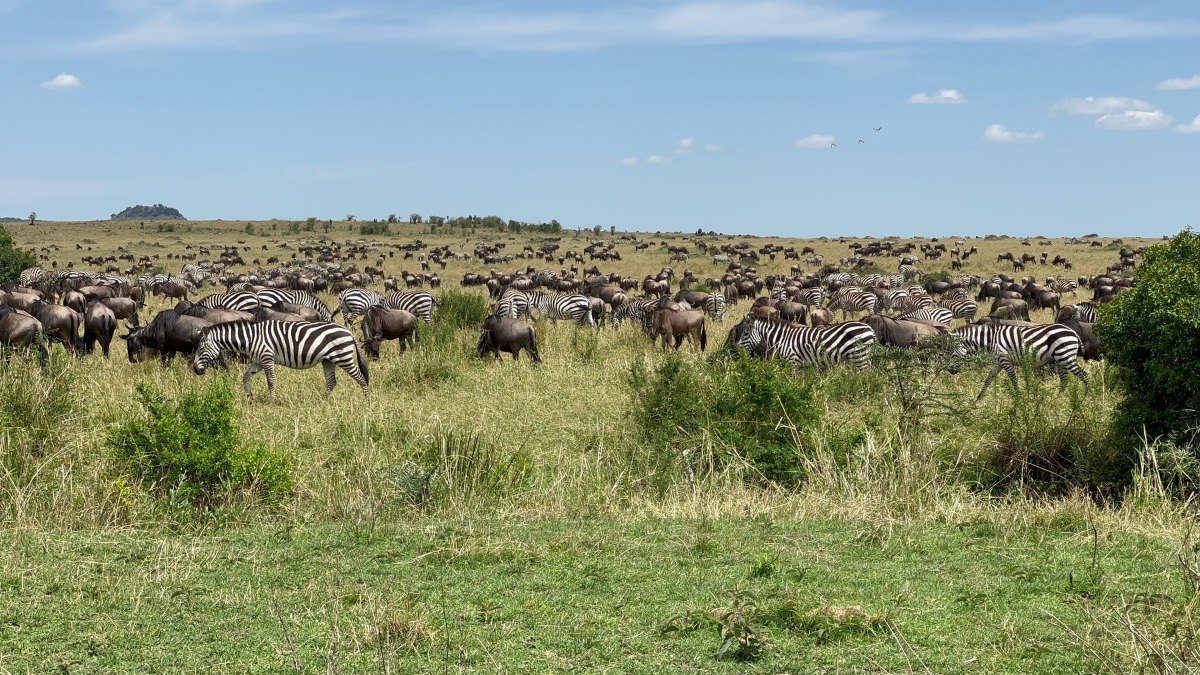
Hordes of wildebeest and zebra migrate back to the Tanzania’s Serengeti National Park from the Maasai Mara National Reserve, in Kenya on 28th September. PICTURE: Thomson Reuters Foundation/Nita Bhalla
The time the migratory herds spend in the Mara has also decreased – sometimes falling to one-and-half months, compared to four months before, the research found.
“The numbers of wildebeest were already declining due to the increased human settlements, the building of fences and large herds of livestock, which are all preventing the wildebeest from accessing grazing land,” Ogutu told the Thomson Reuters Foundation.
“Climate change has certainly worsened the situation. If there is even a small drought, the wildlife has no space to find food. By 2050, there is a serious risk that the migration could collapse – it could even happen earlier.”
His warning comes days ahead of the COP27 UN climate summit in Egypt, where world leaders are expected to battle over how much financial support rich countries should provide to developing nations to help them cope with the consequences of global warming.
Famed for its big game safaris and palm-fringed Indian Ocean beaches, Kenya attracts about two million visitors each year from countries such as China, Germany, the United States, France, India and Britain.
Tourism is a key pillar of the economy, providing more than two million people with jobs and accounting for about 10 per cent of the East African nation’s gross domestic product.
Nowhere is this more evident than at Kenya’s top tourist attraction: the Maasai Mara.
Covering 1,510 square kilometres, the Mara’s greatest spectacle takes place every July after the rainy season when the wildebeest pour into the reserve, running the gauntlet of hungry Nile crocodiles as they cross the Mara river.
Once they reach the Mara’s lush savannah plains, the wildebeest feed and mate and then make the arduous journey back to the Serengeti in October to give birth before the herd, with its newly born calves, embarks on another cycle of migration.
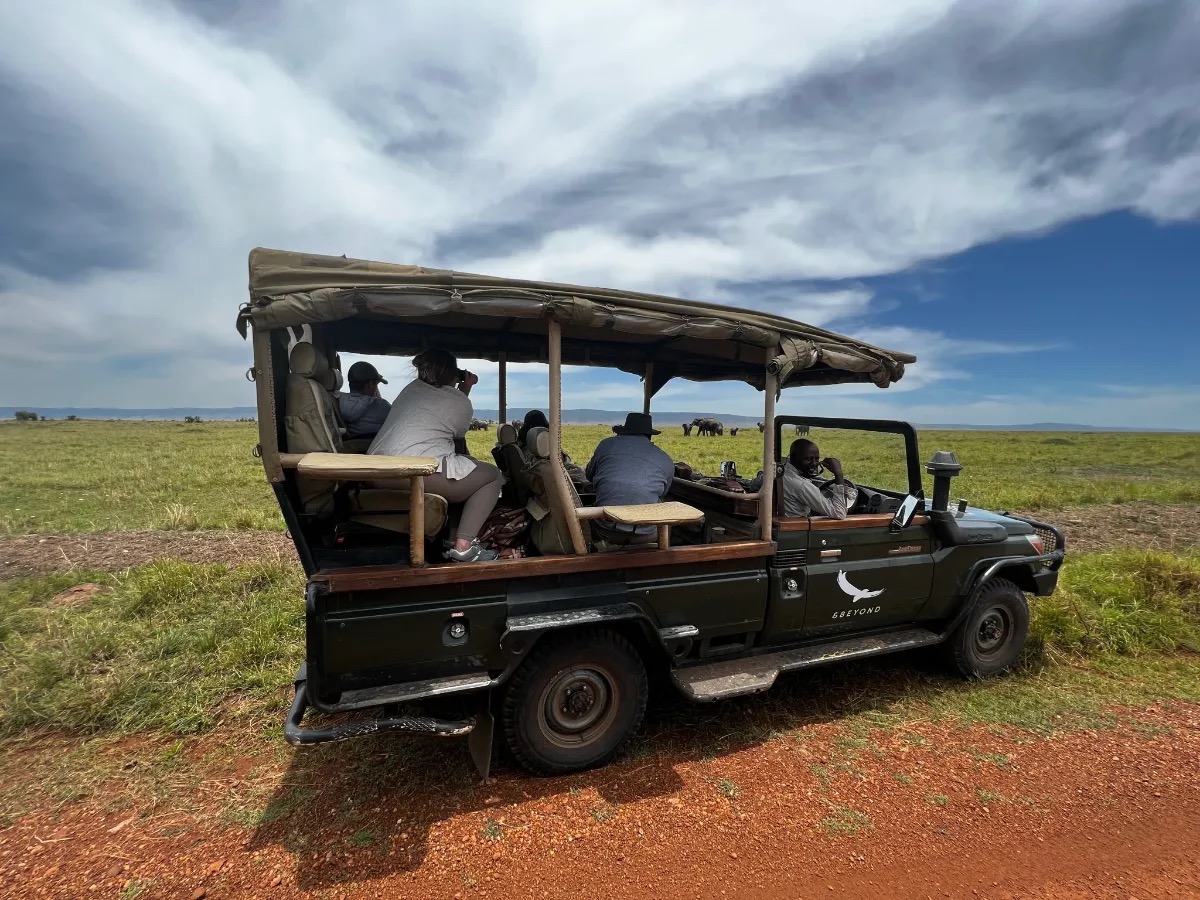
Tourists view a herd of elephants at the Maasai Mara Natiional Reserve in Kenya on 28th September. PICTURE: Thomson Reuters Foundation/Nita Bhalla.
As well as generating millions of dollars in tourist revenues for Kenya, the wildebeest are vital to maintaining the Mara’s ecosystem.
Sometimes referred to as the “lawnmowers of the Mara”, they feed on the long grass, leaving the shorter grass for other herbivores such as zebra and gazelles. This also helps to reduce the frequency of fires during dry spells.
East Africa is one of the most vulnerable regions to climate change, with countries such as Kenya, Ethiopia and Somalia regularly experiencing unpredictable weather, from long dry spells to torrential rains and floods.
The region is currently experiencing the driest conditions recorded since 1981, following the failure of four consecutive rainy seasons. That has left 26 million people in the three countries on the brink of extreme hunger, according to the World Food Programme.
We rely on our readers to fund Sight's work - become a financial supporter today!
For more information, head to our Subscriber's page.
In the Maasai Mara reserve, the increased dry spells are also stoking conflict between humans and predators.
“When there is drought, the herbivores move into areas looking for pasture and water and they are followed by lions, who then attack cattle,” said Kasaine Sankan, senior program researcher at the Mara Predator Conservation Programme.
“Community members then seek revenge by killing lions in order to save their livestock.”
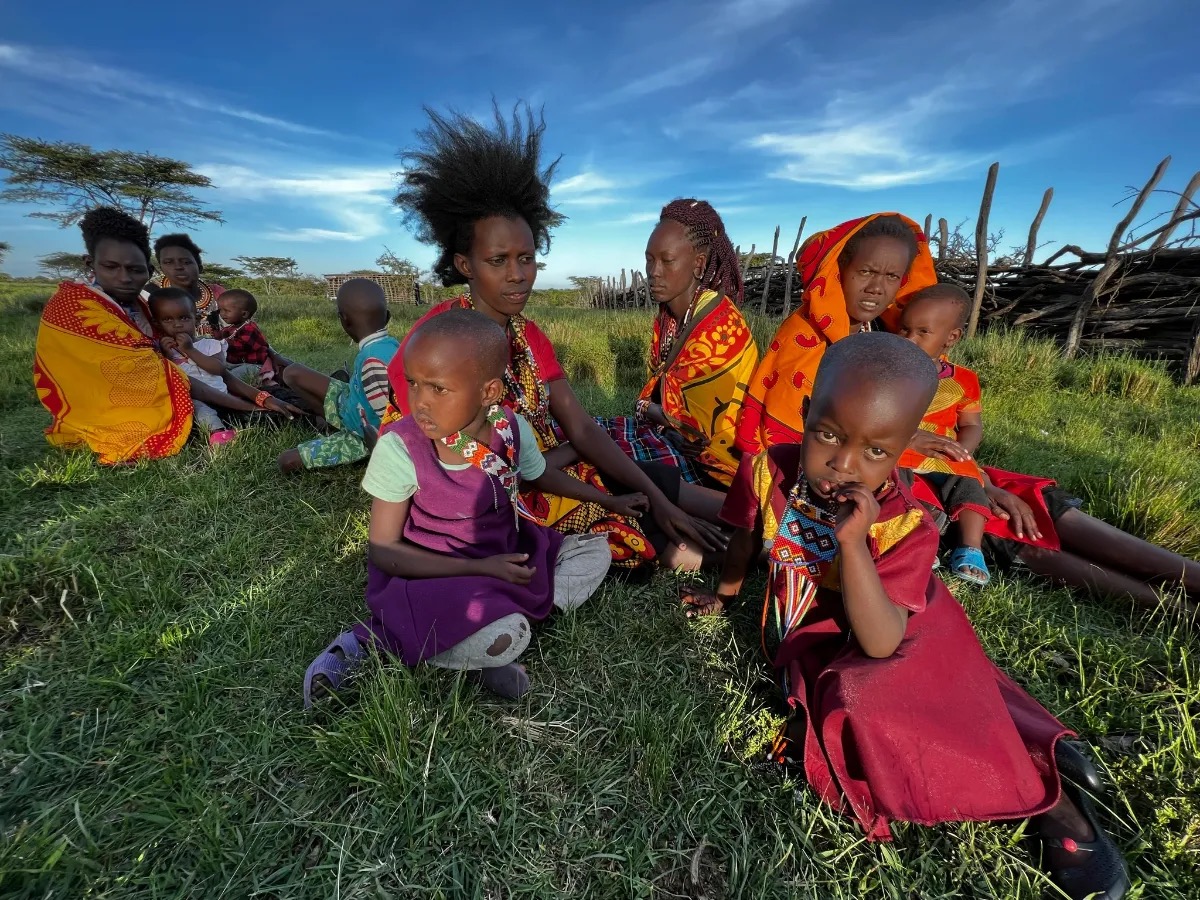
Maasai women and children at the Oloisukut Conservancy bordering the Maasai Mara Natiional Reserve in Kenya on 27th September. PICTURE: Thomson Reuters Foundation/Nita Bhalla.
Sankan said dry periods also meant that Maasai cattle herders were encroaching into the reserve – leaving less grazing land for herbivores like the wildebeest.
With support from conservation nonprofit WWF Kenya, some communities are trying to adapt by reducing their herds of cattle, sheep and goats and introducing breeds that are more resilient to drought.
They are also building “predator-proof” enclosures with stronger fencing and lights, installing water pumps and allocating specific grazing zones for the community.
As climate change models project more frequent flooding and droughts in the Mara, further disruption to the wildebeest migration would be a huge global blow, said Yussuf Wato, wildlife programme manager at WWF Kenya.
It would be particularly painful for Kenya, he said, adding that African nations were paying a huge cost despite contributing only three per cent of the world’s greenhouse gas emissions.
“Global leaders at the climate conference need to honour commitments made to secure net zero by 2050, build the resilience of communities and ecosystems by protecting natural habitats and provide the financing to help countries adapt,” said Wato.
“If we do nothing by 2050, these protected areas like the Greater Mara ecosystem are going to be very vulnerable. They will not remain as they are now.”
Below – A lioness at the Maasai Mara Natiional Reserve in Kenya on 28th September. PICTURE: Thomson Reuters Foundation/Nita Bhalla.
